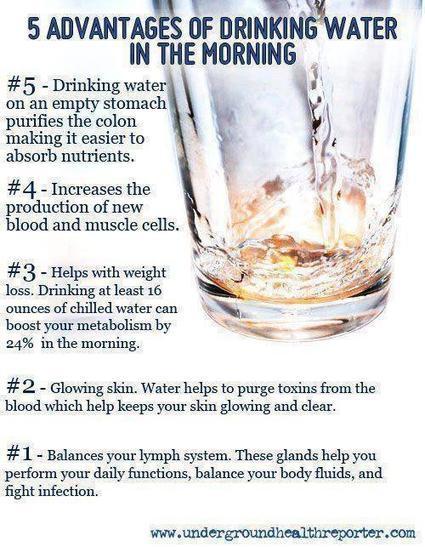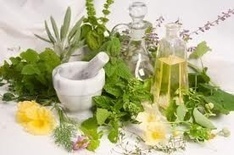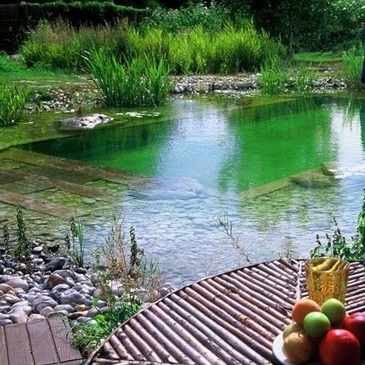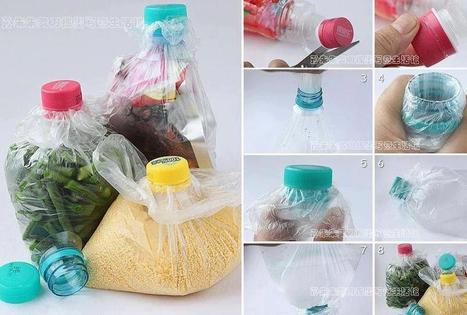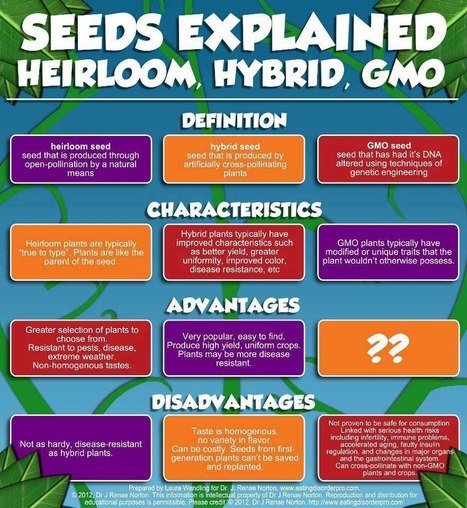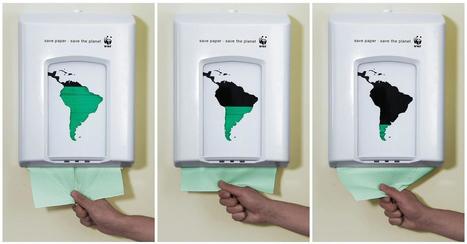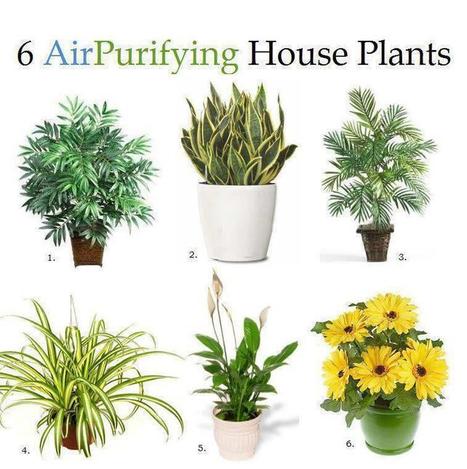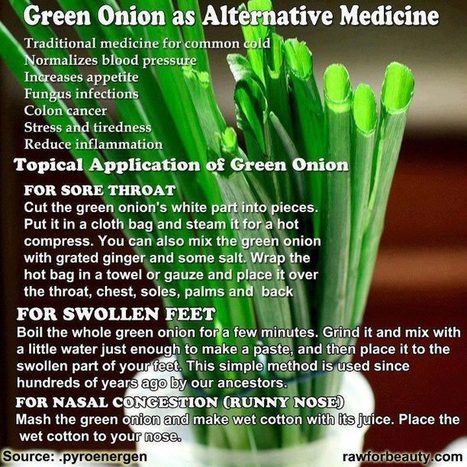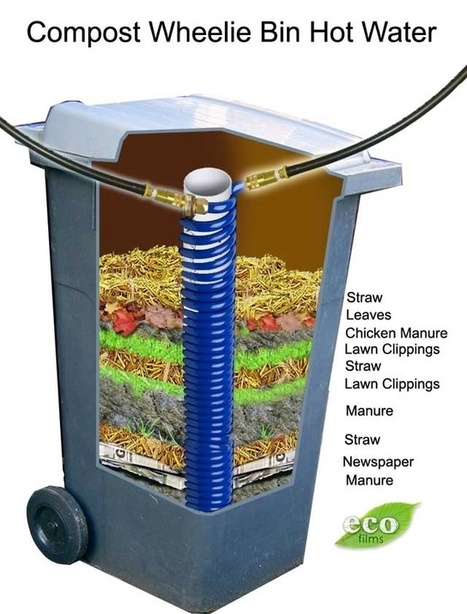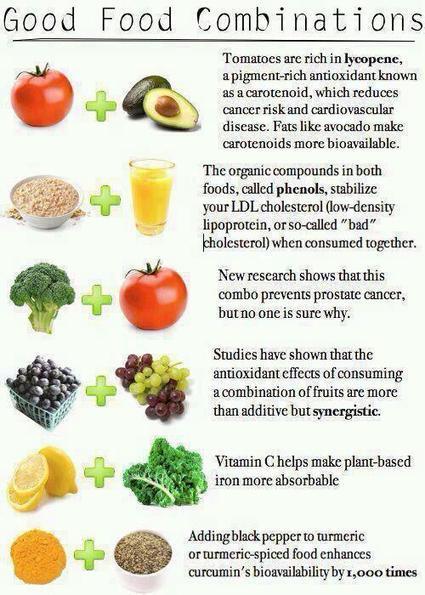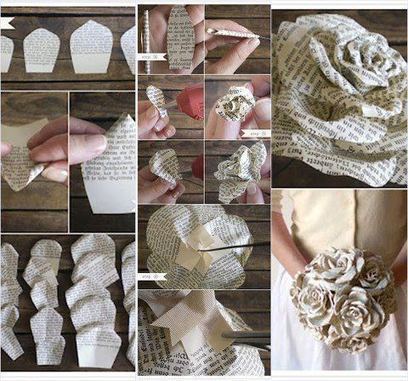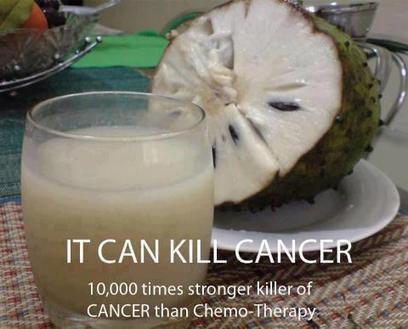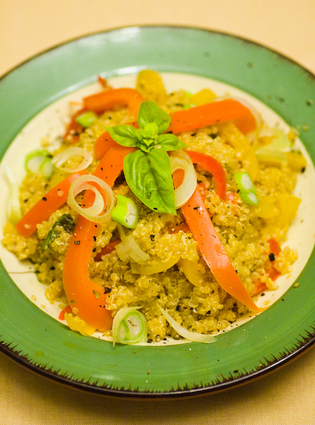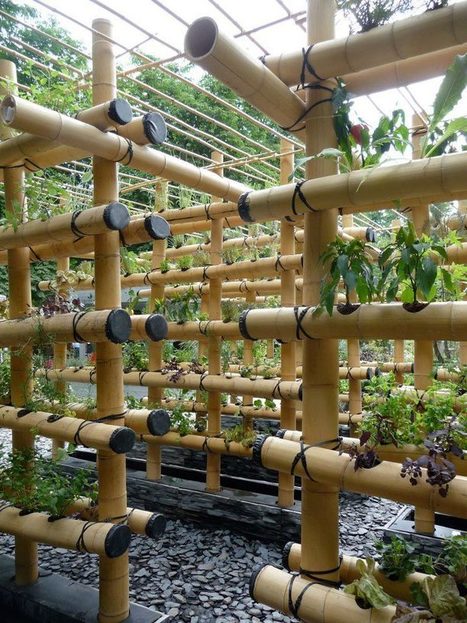 Your new post is loading...
 Your new post is loading...

|
Scooped by
Anne Bak
|

|
Scooped by
Anne Bak
|

|
Scooped by
Anne Bak
|

|
Scooped by
Anne Bak
|

|
Scooped by
Anne Bak
|
Les piscines naturelles, aussi appelées baignades naturelles, sont en vogue. Mais sait-on vraiment de quoi il s’agit ? Une piscine naturelle, qu’est-ce que c’est ? Une baignade naturelle reproduit l'écosystème des lacs naturels. Elle utilise les propriétés des plantes et des bactéries, et non plus des produits chimiques, pour garantir la propreté de l’eau.
Via laminutedeco

|
Scooped by
Anne Bak
|

|
Scooped by
Anne Bak
|
Here's a quick explanation of differences between seeds - heirloom, hybrid or GMO.
Slow Food is against the commercial planting of genetically modified crops and promotes GM-free food and animal feed. GMOs present many health, environmental and economic risks, and they mean transforming our food into a patented commodity controlled by a few multinationals.
This year Slow Food joined the Stop The Crop campaign with Friends of the Earth International in response to theEuropean Commission's consideration of the introduction of new GM crops. More info on our GMO campaign here:http://www.slowfood.com/international/22/gmos

|
Scooped by
Anne Bak
|

|
Scooped by
Anne Bak
|

|
Scooped by
Anne Bak
|
Air Purifying House Plants. Learn about 50 plants in this book: http://amzn.to/11uHVv8
1. Bamboo Palms remove formaldehyde and are also said to act as a natural humidifier.
2. Snake Plants absorb nitrogen oxides and formaldehyde. http://amzn.to/13We42c
3. Areca Palms are one of the best air purifying plants for general air cleanliness.
4. Spider Plants are great indoor plants for removing carbon monoxide and other toxins. Spider plants are one of three plants NASA deems best at removing formaldehyde from air. http://amzn.to/ZfYTPD
5. The Peace Lily could be called the “clean-all”. They’re often placed in bathrooms or laundry rooms because they’re known for removing mold spores. Also know to remove formaldehyde and trichloroethylene from air as well. A somewhat toxic plant to pets however, so keep this one on a shelf or out of reach altogether.http://amzn.to/10B6PXv
6. A Gerbera Daisy not only has beautiful flowers, but they also remove benzene from the air. They’re known to improve sleep by absorbing carbon dioxide and giving off more oxygen throughout the night

|
Scooped by
Anne Bak
|
Cottage in the heart of Floral Park Chateau de Drulon (Drulon Castle). The gardens of Drulon are situated at the D997 in between Saint Amand Montrond--Culan, France. Around a 15th and 17th-century architectural ensemble, extraordinary gardens succeed each other in a 16-hectare unspoilt area. Botanical collections and exhibition of sculptures. Ever since 2000 the Drulon gardens organize, every season a new exhibition of contemporary art. The artistic gardens of Drulon form a harmonious combination of art and nature. Features include the secret garden of the château, 500 different kinds of roses, and a marsh surrounded by paths and natural labyrinths created by grazing sheep. In 2004 and 2006 a peony garden with over 300 different tree peonies was created, making Drulon one of the biggest peony gardens of France. This new garden was completed with a large collection of David Austin roses and an enormous number of hemerocallis (day-lilies). Languages spoken : German, English, Dutch, French. http://www.leboncoin.fr/locations_de_vacances/435061220.htm http://www.drulon.com/DRULON_INTRO/INTRO.html http://www.visaloire.com/GetOrganised/Visits/Parks-and-gardens/detail_PCUCEN0180011465

|
Scooped by
Anne Bak
|
1001 Uses for white vinegar: http://www.vinegartips.com/scripts/pageViewSec.asp?id=7 for example Cleaning: White distilled vinegar is a popular household cleanser, effective for killing most mold, bacteria, and germs, due to its level of acidity. Cleaning with white distilled vinegar is a smart way to avoid using harsh chemicals. You’ll also be glad to know that it is environmentally friendly and very economical. To shine chrome sink fixtures that have a lime buildup, use a paste made of 2 tablespoons salt and 1 teaspoon white distilled vinegar.
Make your own scouring cleanser by combining 1/4 cup baking soda with 1 tablespoon liquid detergent. Add just enough white distilled vinegar to give it a thick but creamy texture.
Clean counter tops and make them smell sweet again with a cloth soaked in undiluted white distilled vinegar.
Clean and deodorize a drain by pouring in 1 cup baking soda, then one cup hot white distilled vinegar. Let this sit for 5 minutes or so, then run hot water down the drain.
Deodorize the garbage disposal by pouring in 1/2 cup baking soda and 1/2 cup hot white distilled vinegar. Let sit for 5 minutes then run hot water down the disposal.
Deodorize and clean the garbage disposal with white distilled vinegar ice cubes. Make them by freezing full-strength white distilled vinegar in an ice cube tray. Run several cubes down the disposal while flushing with cold water.
Clean the microwave by mixing 1/2 cup white distilled vinegar and 1/2 cup water in a microwave-safe bowl. Bring it to a rolling boil inside the microwave. Baked-on food will be loosened, and odors will disappear. Wipe clean.
Clean the shelves and walls of the refrigerator with a half-and-half solution of water and white distilled vinegar.
Cut the grime on the top of the refrigerator with a paper towel or cloth and full-strength white distilled vinegar.
Avoid the bad smell when you heat up a newly cleaned oven by using a sponge soaked in diluted white distilled vinegar for the final rinse.
To clean a grease splattered oven door window, saturate it with full-strength white distilled vinegar. Keep the door open for 10 to 15 minutes before wiping with a sponge.
Remove soap buildup and odors from the dishwasher by pouring a cup of white distilled vinegar inside the empty machine and running it through a whole cycle. Do monthly.
To prevent good glassware from getting etched by minerals, wash then spray with full-strength white distilled vinegar. Give the glasses a hot water rinse before letting them dry or drying them with a towel.
For cloudy glassware, soak paper towels or a cloth in full-strength white distilled vinegar and wrap around the inside and outside of the glass. Let sit awhile before rinsing clean.
Get rid of lime deposits in a tea kettle by adding 1/2 cup white distilled vinegar to the water and letting it sit overnight. If more drastic action is needed, boil full-strength white distilled vinegar in the kettle a few minutes, let cool and rinse with plain water.
Remove mineral deposits from coffee makers with white distilled vinegar. Fill the water reservoir with 1 cup or more of white distilled vinegar and run it through a whole cycle. Run it once or twice more with plain water to rinse clean. (Check the owners’ manual first.)
Remove stains from coffee and teacups by scrubbing them gently with equal parts of salt (or baking soda) and white distilled vinegar. Rinse clean.
For stained and smelly plastic food containers, wipe them with a cloth dampened with white distilled vinegar.
Remove odors from a lunch box by placing inside a slice of bread that has been soaked in white distilled vinegar. Leave overnight.
Remove ugly film in narrow-necked glass jars, flower vases, and bottles by letting undiluted white distilled vinegar sit in them for a few hours. Add a little rice or sand and shake vigorously to loosen stubborn stains. Repeat if necessary.
Easily clean your mini blinds by wearing pair of white cotton gloves. Dip gloved fingers into a solution of equal parts white vinegar and warm tap water, and run your fingers across both sides of each blind.
To clean tarnished brass, copper, and pewter, use a paste with equal amounts of white distilled vinegar and table salt.
Make a metal cleanser by adding enough white distilled vinegar to 2 tablespoons of cream of tartar to make a paste. Rub it on and let it dry on the surface. Wash it off and dry with a soft cloth.
Polish brass and copper with a mixture of 2 tablespoons of ketchup and 1 tablespoon white distilled vinegar. Rub it on with a clean cloth until dry and shiny.
Remove dark stains on an aluminum pot by boiling a mixture of 1 cup white distilled vinegar and 1 cup hot water.
Discourage ants by spraying undiluted white distilled vinegar outside doorways and windowsills, around appliances and wherever you find the pests coming in.
Get rid of fruit flies by setting out a small dish of undiluted white distilled vinegar.
Clean the wheel of a can opener using white distilled vinegar and an old toothbrush.
Remove the smell of spoiled food from a refrigerator by first rinsing the area with soap and water. Spray surfaces with full-strength white distilled vinegar and wipe them down with a damp cloth or sponge. Fill some containers with baking soda and place inside. Close the door and leave for a few days.
Wipe grease off exhaust fan grids, the inside of your oven, or anywhere grease gathers with a sponge soaked in white distilled vinegar.
To make cleaning the grill easier, spray a solution of half water and half white distilled vinegar on the cooking surface.
To remove a label, decal, or price tag, cover with a cloth soaked in white distilled vinegar. Leave the cloth on overnight and the label should slide off.
Renew sponges and dishrags by placing them in just enough water to cover them. Then add 1/4 cup white distilled vinegar. Let them soak overnight.
Get rid of calcium deposits on faucets by soaking a cloth or paper towel in white distilled vinegar and wrapping the area tightly. Let this sit for a couple of hours or overnight.
Remove soap buildup from faucets by scrubbing them with a solution of 1 part salt to 4 parts white distilled vinegar.
Rid a faucet of lime deposits by tying a plastic bag containing 1/2 to 1/3 cup of white distilled vinegar around it and leaving it there for two or three hours. If mineral deposits don’t wipe off, scrubbing with an old toothbrush should complete the job.
Shine colored porcelain sinks by scouring them with undiluted white distilled vinegar.
Rinse away soapy film on countertops with a solution of white distilled vinegar and water.
Clean grout by letting full-strength white distilled vinegar sit on it for a few minutes and scrubbing it with an old toothbrush.
Kill germs all around the bathroom with a spray of full-strength white distilled vinegar. Wipe clean with a damp cloth.
To remove grime, mildew, and scum from the tub, tile, shower curtain or door, wipe with undiluted white distilled vinegar. Rinse with water.
Spray shower doors with full-strength white distilled vinegar after you’ve squeegeed the glass, or before you step in and turn on the water. It will help release the hard water deposits so they don’t remain on the glass.
Mix up an inexpensive tile cleaner by adding 1/2 cup baking soda, 1 cup white distilled vinegar, and 1 cup ammonia to a gallon of warm water.
Get rid of stubborn bathtub film by wiping it with white distilled vinegar and then scouring with baking soda.
Soak a sponge or loofah overnight in a strong white distilled vinegar and water solution to remove dirt and slime. Rinse several times with cold water and let air dry (in the sun if possible).
Clean shower door tracks by filling them with white distilled vinegar and letting it sit for a few hours. Pour hot water into the tracks and wash and scrub away the scum with a toothbrush.
To clean a scummy showerhead, pour 1/2 cup baking soda and 1 cup white distilled vinegar into a sandwich bag and tie it around the showerhead. Let this set for an hour after the bubbling has stopped. Remove the bag and then turn on the water.
Deodorize the toilet bowl by allowing 3 cups white distilled vinegar to sit in it for about a half hour before flushing.
To make the toilet bowl sparkle, pour in a cup or more of diluted white distilled vinegar and let it sit several hours or overnight. Scrub well with the toilet brush and flush.
Freshen air in the bathroom by spraying into the air a solution of 1 teaspoon baking soda, 1 tablespoon white distilled vinegar, and 1 cup water.
Get a shining finish on a no-wax vinyl or linoleum floor by cleaning it with a solution of one cup white distilled vinegar for every gallon of water.
Apply full-strength white distilled vinegar directly to tough linoleum stains. Leave it on for 10 to 15 minutes before wiping it up. If that doesn’t work, apply white distilled vinegar again and then sprinkle some baking soda over the white distilled vinegar. Scrub the area with a brush or sponge. Rinse clean with water.
For an economical and environmentally friendly floor cleaner, mix a solution of 3 drops dishwashing liquid to 1/3 part white distilled vinegar, 1/3 part alcohol, and 1/3 part water. Spray sparingly and mop for a fast clean-up.
Some carpet stains can be removed with a paste of 2 tablespoons white distilled vinegar and 1/4 cup salt or baking soda. Rub into the carpet stain and let dry. Vacuum up the residue the next day. (Always test on an out-of-sight part of the carpet first).
Bring out the color in carpet by brushing it with a solution of 1 cup white distilled vinegar for every gallon of water. (Always test on an out-of-sight part of the carpet beforehand).
To reduce soap bubbles in a steam cleaner add about 1/4 cup white distilled vinegar. Use the same amount in the rinse water to remove detergent residue and make carpets stay fresh longer.
Wash indoor/outdoor carpet with a solution of 1 cup white distilled vinegar in 1 bucket of warm water. Scrub using a brush or a broom and then hose off.
Clean up pet accidents by first blotting up the area and then adding a white distilled vinegar-and-water solution. Blot until it is almost dry. Then sprinkle baking soda over the area and let it dry. Vacuum up the residue the next day.
Create your own window cleaning solution by combining 1/2 cup non-sudsy ammonia, 1 cup white distilled vinegar, and 2 tablespoons cornstarch in a gallon of water.
Remove the wax residue left by commercial window cleaners with a solution of 2 cups water, 1 cup white distilled vinegar and 1 teaspoon of liquid soap or detergent.
To remove paint from windows try using undiluted, hot white distilled vinegar. Give the solution time to soften the paint before removing with a razor edge tool.
To remove paint splatters from windows apply full-strength white distilled vinegar with a clean paintbrush.
Get rid of mildew, dust, and stale odors by wiping down walls with undiluted white distilled vinegar on a cloth or a sponge mop.
Clean woodwork and walls with a mixture of 1 cup white distilled vinegar, 1 cup baking soda, 1/2 cup ammonia and 1 gallon warm water. Wipe on with a sponge or damp—not wet—towel.
Clean wood paneling with a solution of 1/4 cup olive oil, 1/2 cup white distilled vinegar, and 2 cups warm water. Wipe on with a soft cloth.
Remove wallpaper easily by using a paint roller to wet the surface very thoroughly with a solution of equal parts white distilled vinegar and hot water. Or spray on until saturated.
Get decals off walls or doors by letting undiluted white distilled vinegar soak into them for several minutes before trying to peel them off. Repeat if necessary.
Remove white water rings from wood with a solution of equal parts white distilled vinegar and vegetable oil. Rub with the grain.
Remove fireplace soot and grime with undiluted white distilled vinegar. Use a brush to scrub and a towel to blot up the wetness and dirt.
Clean fireplace glass doors with a solution of 1 part white distilled vinegar to 2 parts water. Spray or wipe on, then wipe clean with a dry cloth.
To kill germs, spray full-strength white distilled vinegar on doorknobs and then wipe them dry.
Remove the smell of a dead mouse or other rodent (after removing all animal remnants) by wiping down the area with either white distilled vinegar or bleach. Then place a fabric softener sheet in the area to remove any lingering odors.
Never use white distilled vinegar on marble. The acid can damage the surface.
Before painting old concrete, clean with full-strength white distilled vinegar. Let it air dry.
Clean hardened paint brushes by simmering them in a pot with white distilled vinegar. Soak them first for an hour before bringing the white distilled vinegar to a simmer. Drain and rinse clean.
Remove mud and stains from plastic, fiberglass, or aluminum sports equipment by applying a paste of 1 part white distilled vinegar to 3 parts baking soda. Wipe off with soapy water and rinse with clear water.
Clean your grill by spritzing white distilled vinegar over wadded up aluminum foil and scrubbing the grill vigorously with it.
To remove film in glass baby bottles, fill with equal parts hot water and white distilled vinegar. Let sit for at least an hour. Scrub with a bottle brush.
To clean and disinfect baby toys add a good-sized splash of white distilled vinegar to soapy water.
Clean vinyl baby books or board books by wiping with white distilled vinegar. Wipe clean with a damp sponge or cloth.
Clean scissors that have become sticky (after cutting tape, for instance) with a cloth dipped in undiluted white distilled vinegar.
Clean and deodorize urine on a mattress with a white distilled vinegar and water solution. Then sprinkle the area with baking soda and let dry. Brush or vacuum the residue after it is dry to the touch.
Shine pennies by soaking them for a couple of hours or overnight in a glass or bowl of undiluted white distilled vinegar.
|

|
Scooped by
Anne Bak
|

|
Scooped by
Anne Bak
|

|
Scooped by
Anne Bak
|

|
Scooped by
Anne Bak
|

|
Scooped by
Anne Bak
|

|
Scooped by
Anne Bak
|

|
Scooped by
Anne Bak
|

|
Scooped by
Anne Bak
|
"10000 times stronger killer of CANCER than Chemo".. do share it.. can save many lives, fill up hopes and build confidence in the patients...
The Sour Sop or the fruit from the graviola tree is a miraculous natural cancer cell killer 10,000 times stronger than Chemo.
...
Why are we not aware of this? Its because some big corporation want to make back their money spent on years of research by trying to make a synthetic version of it for sale.
So, since you know it now you can help a friend in need by letting him know or just drink some sour sop juice yourself as prevention from time to time. The taste is not bad after all. It’s completely natural and definitely has no side effects. If you have the space, plant one in your garden.
The other parts of the tree are also useful.
The next time you have a fruit juice, ask for a sour sop.
How many people died in vain while this billion-dollar drug maker concealed the secret of the miraculous Graviola tree?
This tree is low and is called graviola ! in Brazi l, guanabana in Spanish and has the uninspiring name “soursop” in English. The fruit is very large and the subacid sweet white pulp is eaten out of hand or, more commonly, used to make fruit drinks, sherbets and such.
The principal interest in this plant is because of its strong anti-cancer effects. Although it is effective for a number of medical conditions, it is its anti tumor effect that is of most interest. This plant is a proven cancer remedy for cancers of all types.
Besides being a cancer remedy, graviola is a broad spectrum antimicrobial agent for both bacterial and fungal infections, is effective against internal parasites and worms, lowers high blood pressure and is used for depression, stress and nervous disorders.
If there ever was a single example that makes it dramatically clear why the existence of Health Sciences Institute is so vital to Americans like you, it’s the incredible story behind the Graviola tree..
The truth is stunningly simple: Deep within the Amazon Rainforest grows a tree that could literally revolutionize what you, your doctor, and the rest of the world thinks about cancer treatment and chances of survival. The future has never looked more promising.
Research shows that with extracts from this miraculous tree it now may be possible to:
* Attack cancer safely and effectively with an all-natural therapy that does not cause extreme nausea, weight loss and hair loss
* Protect your immune system and avoid deadly infections
* Feel stronger and healthier throughout the course of the treatment
* Boost your energy and improve your outlook on life
The source of this information is just as stunning: It comes from one of America ‘s largest drug manufacturers, th! e fruit of over 20 laboratory tests conducted since the 1970's! What those tests revealed was nothing short of mind numbing… Extracts from the tree were shown to:
* Effectively target and kill malignant cells in 12 types of cancer, including colon, breast, prostate, lung and pancreatic cancer..
* The tree compounds proved to be up to 10,000 times stronger in slowing the growth of cancer cells than Adriamycin, a commonly used chemotherapeutic drug!
* What’s more, unlike chemotherapy, the compound extracted from the Graviola tree selectivelyhunts
down and kills only cancer cells.. It does not harm healthy cells!
The amazing anti-cancer properties of the Graviola tree have been extensively researched–so why haven’t you heard anything about it? If Graviola extract is
One of America ‘s biggest billion-dollar drug makers began a search for a cancer cure and their research centered on Graviola, a legendary healing tree from the Amazon Rainforest.
Various parts of the Graviola tree–including the bark, leaves, roots, fruit and fruit-seeds–have been used for centuries by medicine men and native Indi! ans in S outh America to treat heart disease, asthma, liver problems and arthritis. Going on very little documented scientific evidence, the company poured money and resources into testing the tree’s anti-cancerous properties–and were shocked by the results. Graviola proved itself to be a cancer-killing dynamo.
But that’s where the Graviola story nearly ended.
The company had one huge problem with the Graviola tree–it’s completely natural, and so, under federal law, not patentable. There’s no way to make serious profits from it.
It turns out the drug company invested nearly seven years trying to synthesize two of the Graviola tree’s most powerful anti-cancer ingredients. If they could isolate and produce man-made clones of what makes the Graviola so potent, they’d be able to patent it and make their money back. Alas, they hit a brick wall. The original simply could not be replicated. There was no way the company could protect its profits–or even make back the millions it poured into research.
As the dream of huge profits evaporated, their testing on Graviola came to a screeching halt. Even worse, the company shelved the entire project and chose not to publish the findings of its research!
Luckily, however, there was one scientist from the Graviola research team whose conscience wouldn’t let him see such atrocity committed. Risking his career, he contacted a company that’s dedicated to harvesting medical plants from the Amazon Rainforest and blew the whistle.
Miracle unleashed
When researchers at the Health Sciences Institute were alerted to the news of Graviola,! they be gan tracking the research done on the cancer-killing tree. Evidence of the astounding effectiveness of Graviola–and its shocking cover-up–came in fast and furious….
….The National Cancer Institute performed the first scientific research in 1976. The results showed that Graviola’s “leaves and stems were found effective in attacking and destroying malignant cells.” Inexplicably, the results were published in an internal report and never released to the public…
….Since 1976, Graviola has proven to be an immensely potent cancer killer in 20 independent laboratory tests, yet no double-blind clinical trials–the typical benchmark mainstream doctors and journals use to judge a treatment’s value–were ever initiated….
….A study published in the Journal of Natural Products, following a recent study conducted at Catholic University of South Korea stated that one chemical in Graviola was found to selectively kill colon cancer cells at “10,000 times the potency of (the commonly used chemotherapy drug) Adriamycin…”
….The most significant part of the Catholic University of South Korea report is that Graviola was shown to selectively target the cancer cells, leaving healthy cells untouched. Unlike chemotherapy, which indiscriminately targets all actively reproducing cells (such as stomach and hair cells), causing the often devastating side effects of nausea and hair loss in cancer patients.
…A study at Purdue University recently found that leaves from the Graviola tree killed cancer cells among six human cell lines and were especially effective against prostate, pancreatic and lung cancers Seven years of silence broken–it’s finally here!!!

|
Scooped by
Anne Bak
|

|
Rescooped by
Anne Bak
from VIM
|

|
Scooped by
Anne Bak
|
|

 Your new post is loading...
Your new post is loading...
 Your new post is loading...
Your new post is loading...



